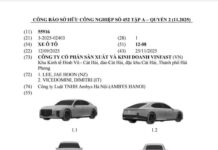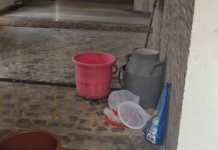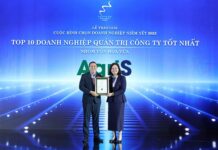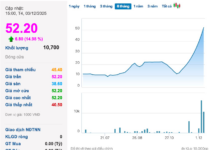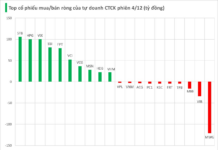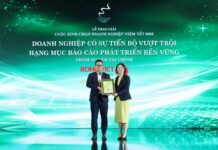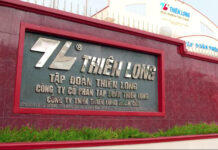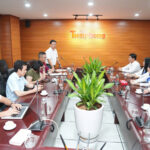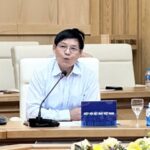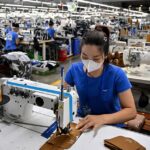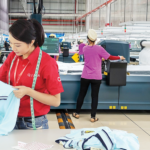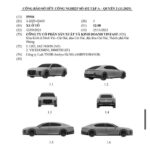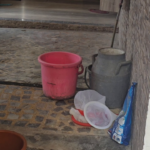Vietnam’s textile and apparel industry is undergoing a significant transformation, shifting from low-cost manufacturing to self-designed, branded products with higher added value. After years of relying on foreign processing orders, many companies are now asserting their new position—evolving from “contract manufacturers” to “owners” of the fashion production chain.
Positive Shifts
According to the Vietnam Textile and Apparel Association (VITAS), in the first nine months of 2025, the industry’s export turnover reached over $34.7 billion, a nearly 8% increase compared to the same period last year. Notably, the proportion of products with unique designs and styles has risen significantly. Major brands like May 10, Viet Tien, Nha Be, and An Phuoc have heavily invested in design centers, hiring international experts and training domestic creative teams. Several Vietnamese-inspired collections have appeared at regional fashion weeks, contributing to the establishment of a professional and modern “Made in Vietnam” fashion image.
Additionally, businesses are accelerating the adoption of digital technology, 3D design, and smart supply chain management to shorten production times, reduce costs, and quickly respond to market trends. Some companies have begun developing sustainable product lines, using recycled materials and eco-friendly processes, aligning with international standards and global green consumption trends.
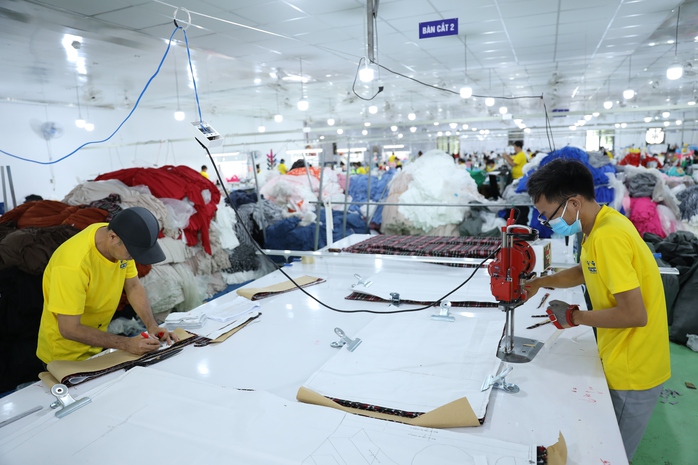
Many garment companies have created high-value-added products
Mr. Vu Duc Giang, Chairman of VITAS, acknowledges that the shift from processing to self-designing empowers Vietnamese businesses to be more market-driven and lays the foundation for building a national fashion brand. “Vietnam’s textile exports now carry higher added value, no longer just low-value processed goods as before. We’ve moved past that stage,” Mr. Giang affirmed.
Reports indicate that Vietnamese textile products are present in 138 countries and territories, with apparel exports reaching over $27.8 billion, accounting for the majority of export turnover and generating a trade surplus of approximately $17 billion.
Vietnam currently ranks third globally in textile exports, behind only China and Bangladesh. “The Vietnamese textile industry is diversifying markets, customers, and products. Notably, the share of high-value-added goods is growing, reflecting a robust transformation in both quality and quantity,” Mr. Giang stated.
Mr. Giang added that alongside technological innovation, Vietnam’s textile industry has embraced automation and robotics in production and is rapidly implementing “greening” solutions. “International customers now demand not only quality but also supplier involvement in design development, idea generation, and material sourcing. In return, Vietnamese businesses gain control over the production chain and added value,” Mr. Giang shared.
According to the VITAS Chairman, with 16 new-generation free trade agreements (FTAs) signed and 6 others in progress, Vietnam is expected to have 22 effective FTAs by 2027. This provides a crucial foundation for the textile industry to expand markets, leverage tariff preferences, and enhance competitiveness.
Challenges Remain
While Vietnam’s textile industry aims for a sustainable, innovative, and high-value-added development model, the journey is fraught with challenges related to workforce, costs, and competitiveness.
VITAS leadership admits that a major bottleneck is the shortage of design and creative talent—critical for breaking free from low-cost processing. Meanwhile, investing in design centers, 3D software, or brand promotion requires substantial funds, beyond the reach of many businesses. Accessing international markets also remains difficult due to Vietnamese companies’ weaknesses in distribution channels, design copyright protection, and brand establishment.
Therefore, with support in capital, training, and brand promotion, Vietnam’s textile industry can fully rise, shed its “contractor” role, and gradually become a regional fashion design and production hub.
Sharing practical experience, Mr. Pham Anh Quang, Director of Dony Garment Company, Ltd., revealed that his company spent years building a design department, sample workshop, developing a suitable material supply chain, and training a creative workforce.
“You can’t create products just because you want to; you must understand what customers need. If you fear failure, you’ll never escape the processing segment. Keep working, gain experience, and the first success will open doors to bigger opportunities,” he shared. Mr. Quang believes that once a company achieves a successful product, it gains the resources, skills, and reputation to expand its scale and market.
Meanwhile, Mr. Tran Nhu Tung, Chairman of Thanh Cong Textile-Investment-Trading Joint Stock Company, hopes that for a smooth transition, businesses need financial and policy support. “Digital and green transformation is mandatory but extremely costly. Financial institutions should offer low-interest loans and share risks instead of leaving businesses to bear them alone,” he said, emphasizing the urgent need for large-scale textile-dyeing industrial zones, spanning thousands of hectares, to ensure raw material supply and reduce import dependence.
Significant Import of Raw Materials
According to Mr. Vu Duc Giang, the industry’s biggest challenge lies in its supply chain. In the first nine months alone, the industry imported nearly $16 billion in raw materials, with fabric accounting for $11.5 billion. “Heavy reliance on imported materials makes production less autonomous, especially amid global market volatility. Additionally, increased wages and social insurance costs following local mergers further strain competitiveness,” he noted.
Vietnam’s Garment Industry Must Move Beyond Cheap Labor Advantage
“Vietnam’s textile industry can no longer rely on the advantage of cheap labor. We will build our competitive edge through quality, reputation, speed, and technology,” stated the CEO of Vinatex.
“Unraveling the Opportunities and Challenges for the Textile and Footwear Industry in the Coming Years”
On September 9, at the Trade Promotion Conference with the Vietnamese Trade Offices Abroad for August 2025, chaired by the Minister of Industry and Trade, representatives from the Vietnam Textile and Apparel Association and the Vietnam Leather, Footwear and Handbag Association shared new challenges and proposed solutions to overcome difficulties, enhance competitiveness, and seize opportunities in the international market.
The Textile Industry Confronts the European Green Deal
Although the EU’s green policies present significant challenges for Vietnam’s textile exports, in the long run, proactively embracing a comprehensive and synchronized green transition can unlock opportunities for businesses.


